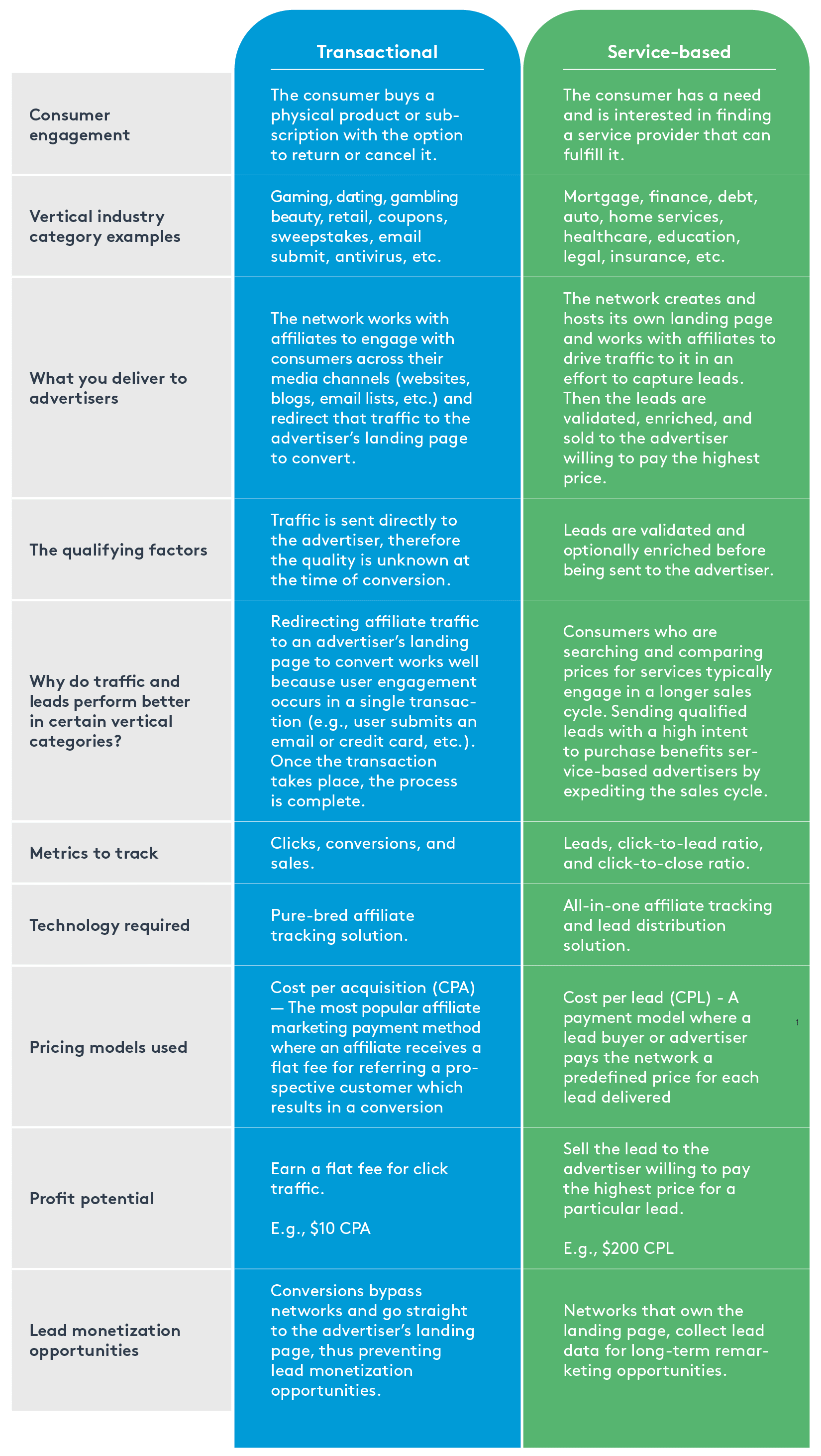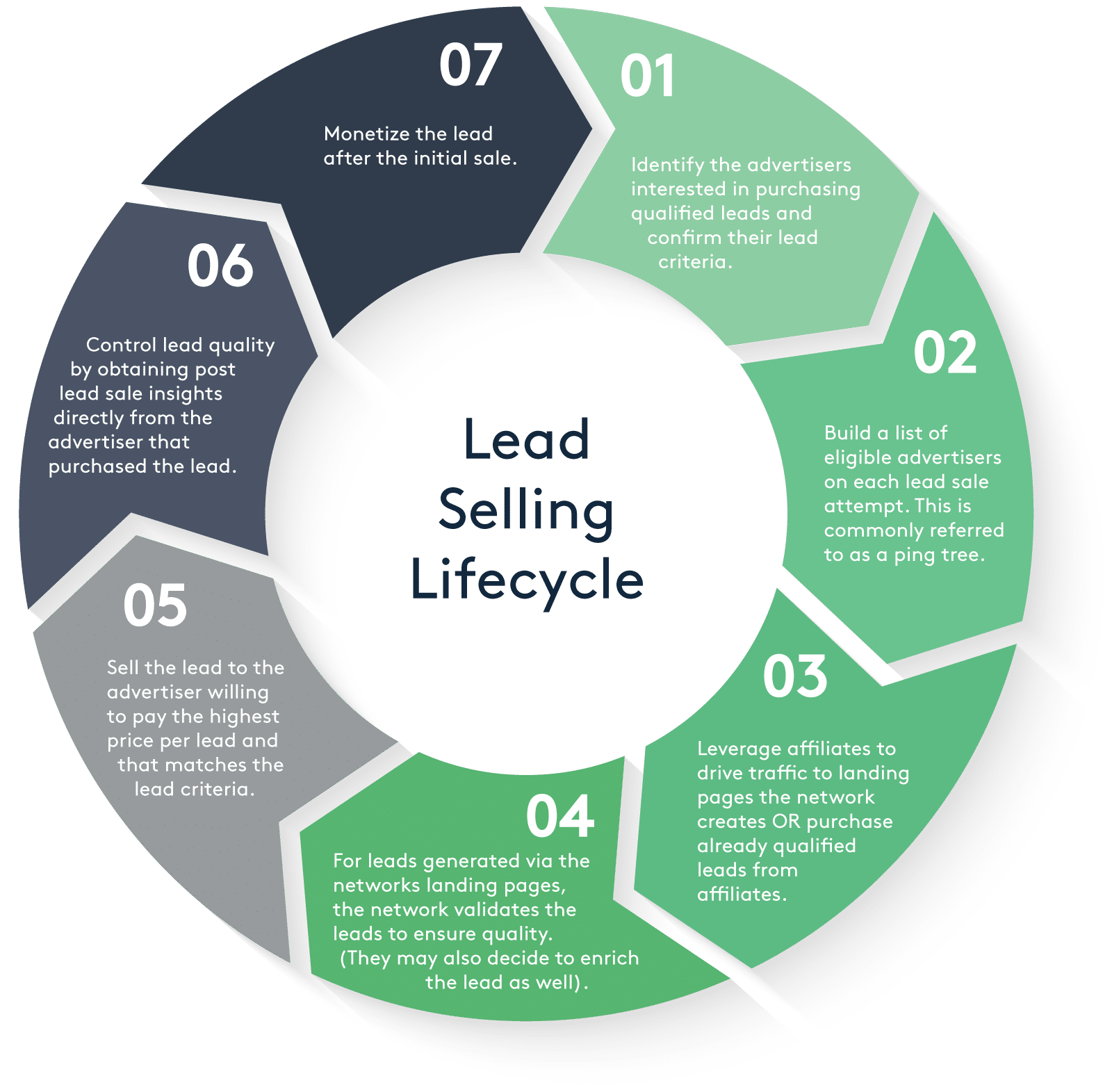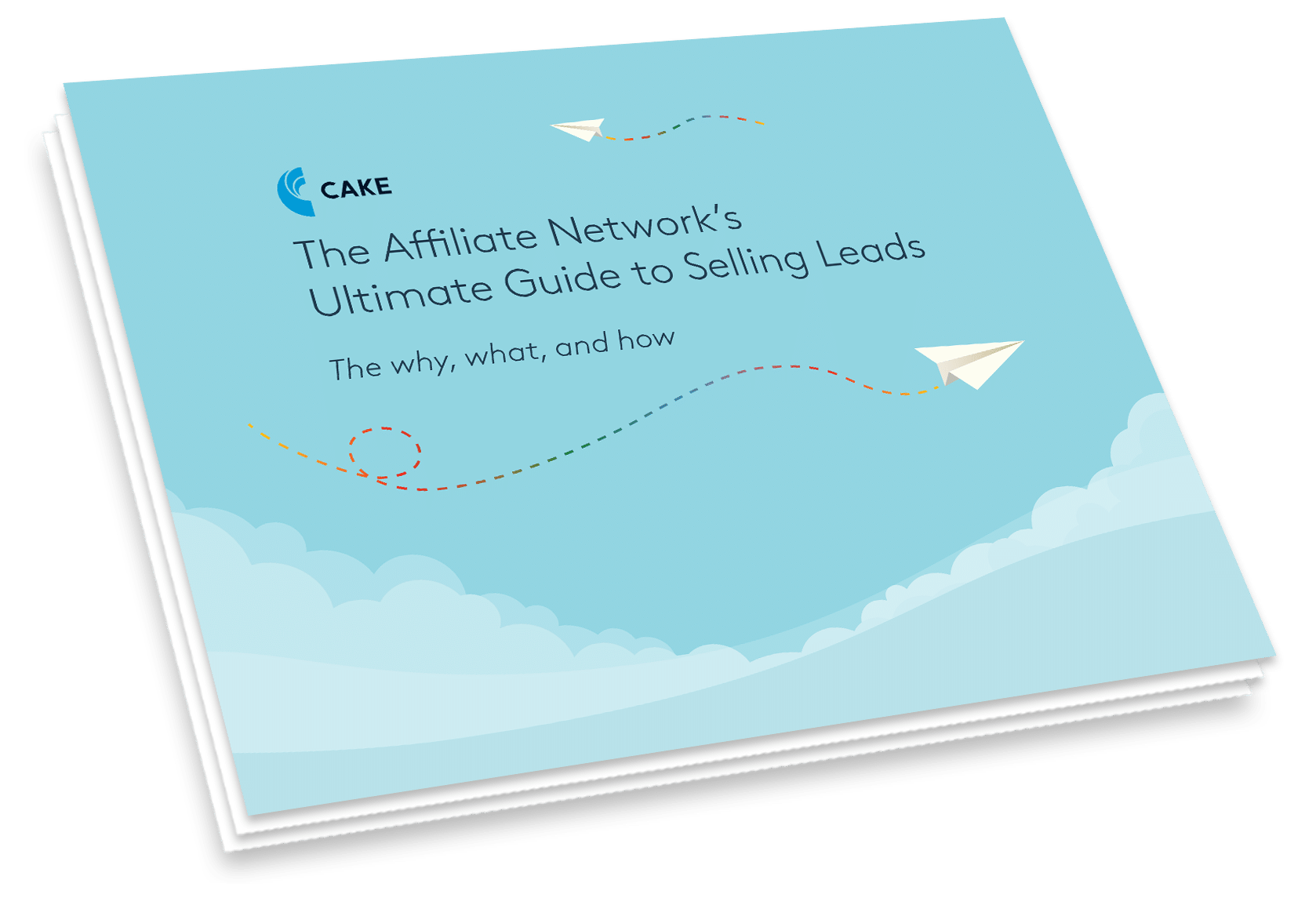Beyond the Basics – The Other Side of Network Diversification

When it comes to network diversification, you might think of vertical combinations such as gambling, gaming, and dating, or health, beauty, and retail. It’s true. This represents vertical diversification across different types of industries. However, there’s another, profitable layer that’s often overlooked – Operating in both transactional and service-based verticals to deliver affiliate traffic and sell leads.
Don’t limit yourself to merely delivering affiliate traffic to advertisers. This decision significantly impacts profit potential, as networks miss out on the opportunity to sell high-quality leads to advertisers willing to pay top dollar.
Let’s explore why delivering affiliate traffic and selling leads across both transactional and service-based verticals can drive results for you and your advertisers, and how to get started. Fortunately, it’s simpler than you might think.
Transactional vs. service-based verticals – Understanding the core differences
Every vertical industry falls into one of two categories – Transactional or service-based. What sets the categories apart are the technologies used, the methods of consumer engagement, how tracking workflows are managed, the value delivered to advertisers, and most importantly the profit potential.
Here’s a breakdown ⬇️

Although networks can technically deliver affiliate traffic in both categories, selling leads to service-based advertisers over unvetted traffic offers the most flexibility. This allows networks to determine how to sell the lead at the best possible price.
While some forward-thinking networks have already built strategies that leverage both affiliate traffic and leads, in our experience, most affiliate networks tend to fall into one of three groups:
- New networks that stick to one or two core transactional verticals and only deliver affiliate traffic.
The drawback – Networks that initially excel in one or two verticals are likely to face mounting competition, potential performance dips due to economic downturns, and missed revenue-generating opportunities. Simply put, what helped a network gain early success may not be efficient in helping them sustain it.
- Networks that operate in numerous verticals–both transactional and service-based–but only deliver affiliate traffic.
The drawback – Seasoned networks lose significant revenue by not selling qualified leads to their service-based advertisers willing to pay the highest price.
- Networks that operate in a wide variety of transactional and service-based verticals and want to expand to sell leads but are limited by their technology.
The drawback – Using a pure-bred affiliate tracking platform restricts a network’s ability to diversify consumer engagement, limits earning potential, and hampers the opportunity to provide valuable leads to advertisers.
Strengthen your network’s performance by selling leads
Selling leads in service-based verticals is a simple path for networks to level up their profitability by generating, validating, and delivering leads to their advertisers willing to pay the highest price per lead. This strategy also benefits advertisers, who receive qualified leads of real consumers demonstrating a higher intent to purchase their services versus a standard affiliate conversion.
The great news is that it’s not an either-or scenario. Delivering affiliate traffic and selling leads can seamlessly coexist within a network. Here’s an overview of how selling leads works:

What differentiates leads from traffic?
First, leads undergo an in-depth validation process to ensure quality before being sold to an advertiser. This process is called lead validation and prevents fraudulent leads from being sold, ensuring advertisers only receive qualified leads from real individuals.
For example, imagine an advertiser is interested in acquiring pre-qualified mortgage leads with strong credit scores, who are primed for loan applications. These premium leads can easily sell for $150 per lead. The pricing per lead can have a range. For instance, with a vertical industry such as legal, a highly qualified lead can go for a selling price in the range of $300–$400. Why the top-tier lead price? Each lead has been through formal lead-validation processes including credit score checks. Unlike the highly qualified lead that sold for a $300-$400 CPL, affiliate traffic sent straight to the same advertiser’s website skips all lead validation processes, resulting in a lower CPA (e.g., $20). For affiliate networks, automating the lead-selling process with technology enables them to earn the highest price per lead. The key is to only sell qualified leads. Advertisers won’t pay premium prices if the leads fail to result in sales.
Second, there are countless opportunities for a network to monetize leads after the initial sale has occurred.
The real value is the ownership of the lead data. Networks can choose to create and host landing pages that collect important lead data. The ownership of the data empowers networks to validate and sell the lead to an advertiser on a CPL basis. After the initial lead sale, the network can enlist its affiliates to launch targeted remarketing campaigns that drive the consumer to convert on additional advertisers’ offers. Remarketing campaigns utilize a CPA payment model. It’s important to note that consumers must opt in via the landing page form to receive marketing campaigns from the network. This crucial step ensures networks comply with consumer privacy and data collection regulations, and engage in privacy-friendly marketing processes.
Unlock more revenue – How to expand into service-based verticals and sell leads
Networks have already mastered the transactional verticals, and are well-versed in creating, nurturing, and leveraging affiliates to drive traffic to their advertisers’ offers and landing pages. The next step is to apply this expertise to broaden the vertical industries you operate in (e.g., finance, home services, legal, etc.) and expand how you engage with your advertisers, focusing on both affiliate traffic and leads.

Download “The Affiliate Network’s Ultimate Guide to Selling Leads–The Why, What, and How” and learn the step-by-step process to get started selling leads.
Don’t let technology hold you back
Can your current platform actually enable network diversification? If you’re using a pure-bred affiliate tracking platform, the reality is probably not. The great news? All it takes is the right solution to get started. CAKE’s all-in-one solution for affiliate marketing and lead distribution is your key to success.
If you’re ready to start selling leads and simplify your affiliate and lead workflows, connect with our team here.
Other content you might be interested in:
- Turbocharge Revenue and Partnerships With an Affiliate Referral Program
- Affiliate Marketing Revenue – Six Proven Revenue Boosters
- Lead Overflow – Two Strategies to Maximize Profitability